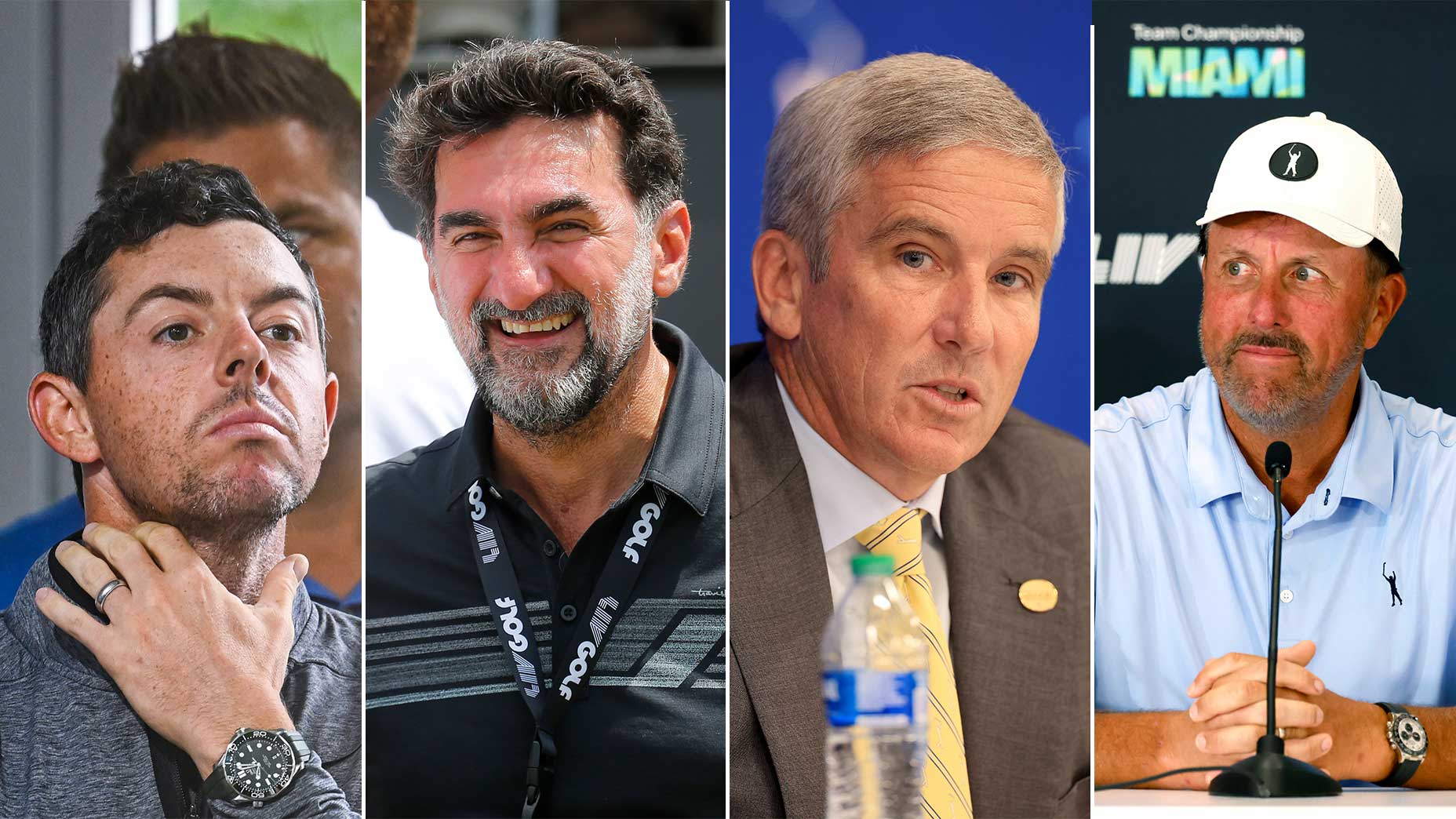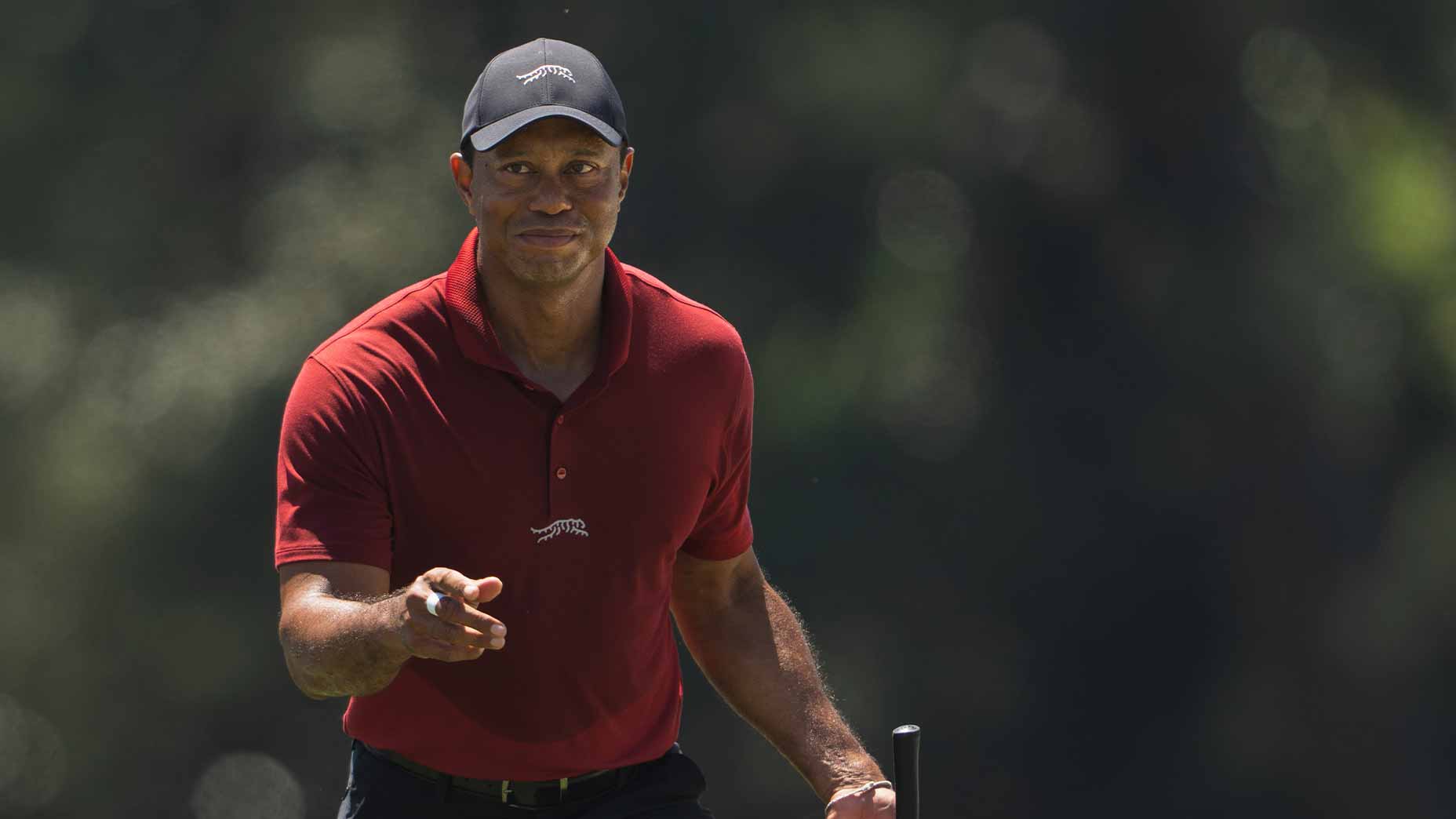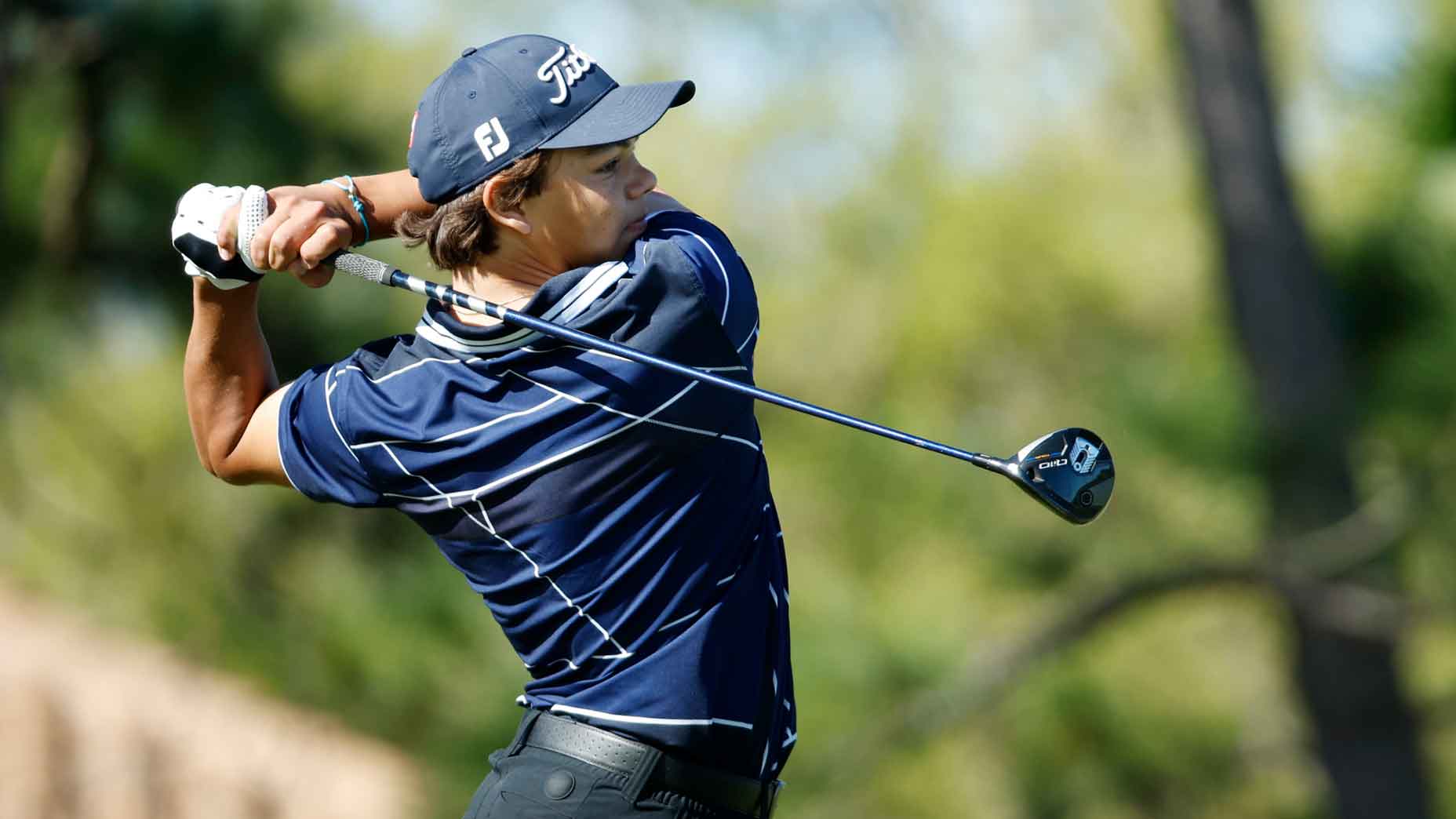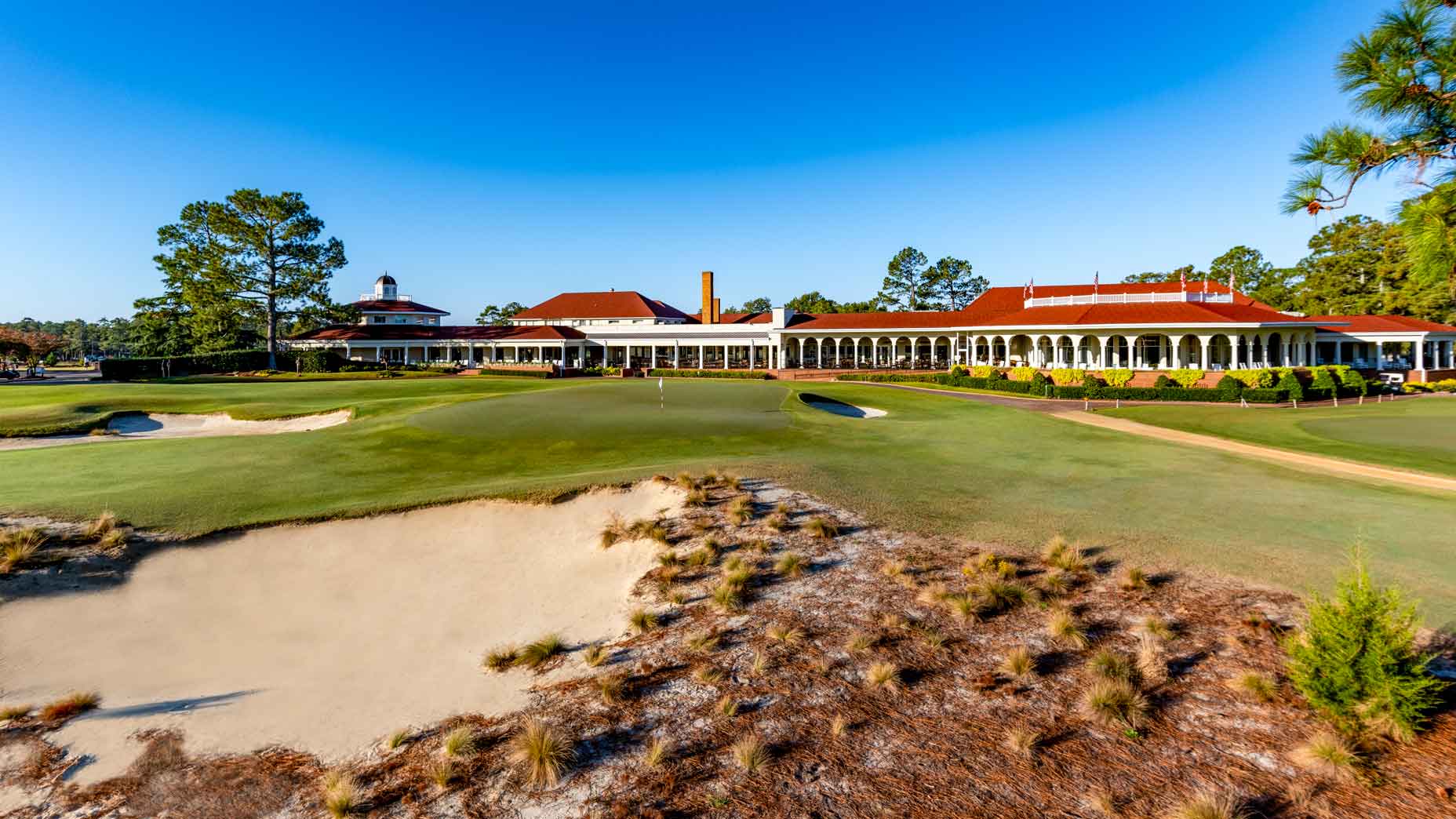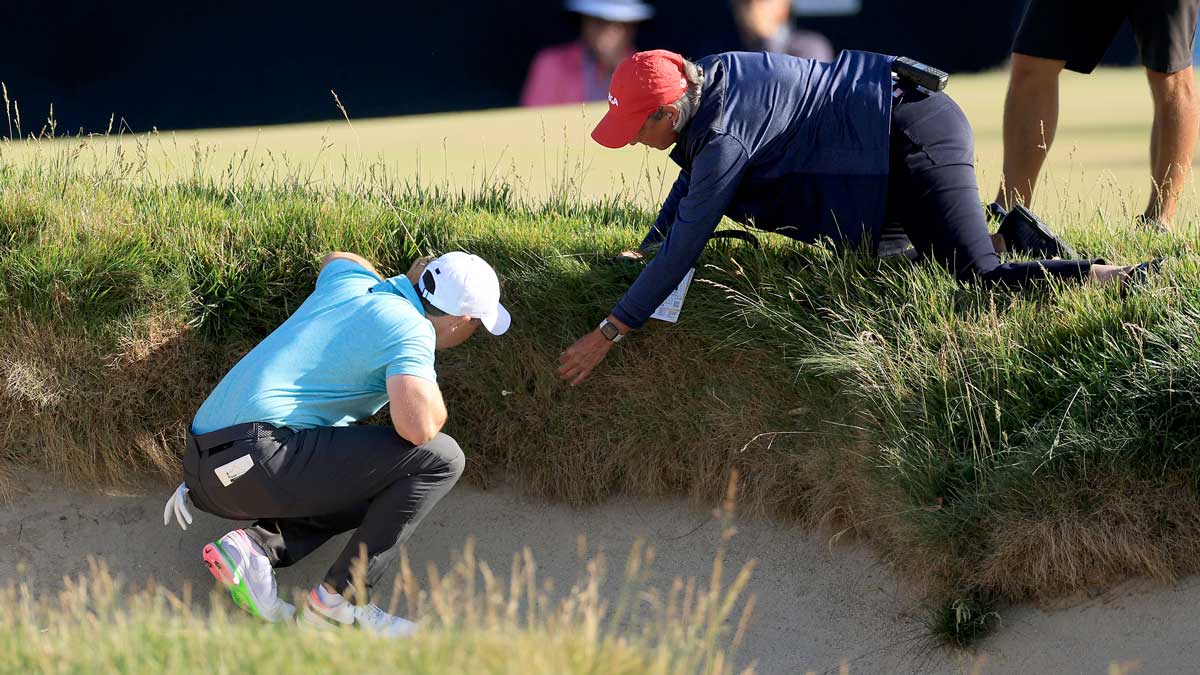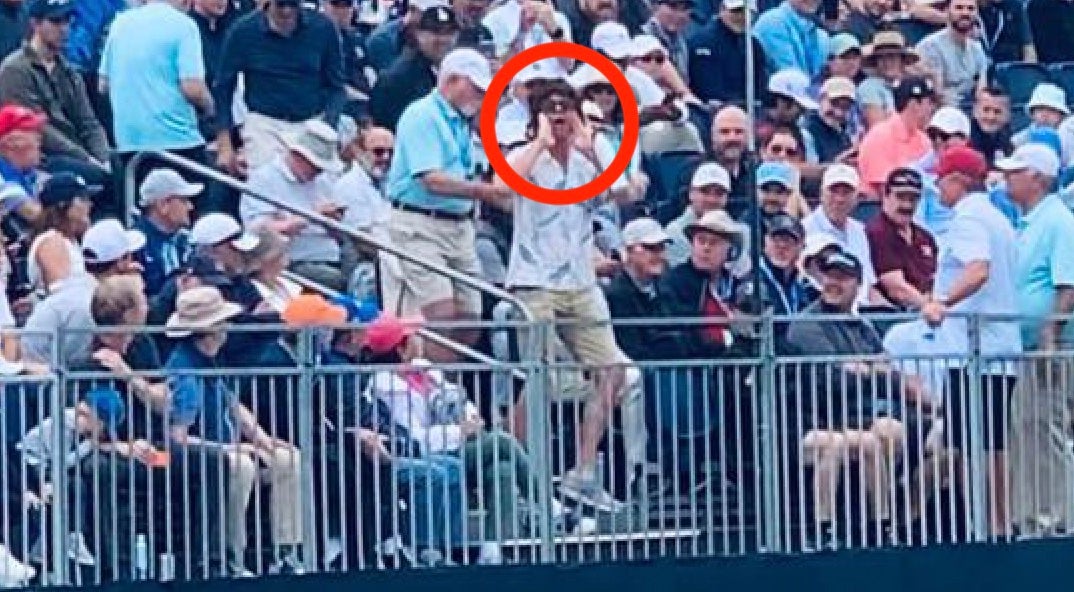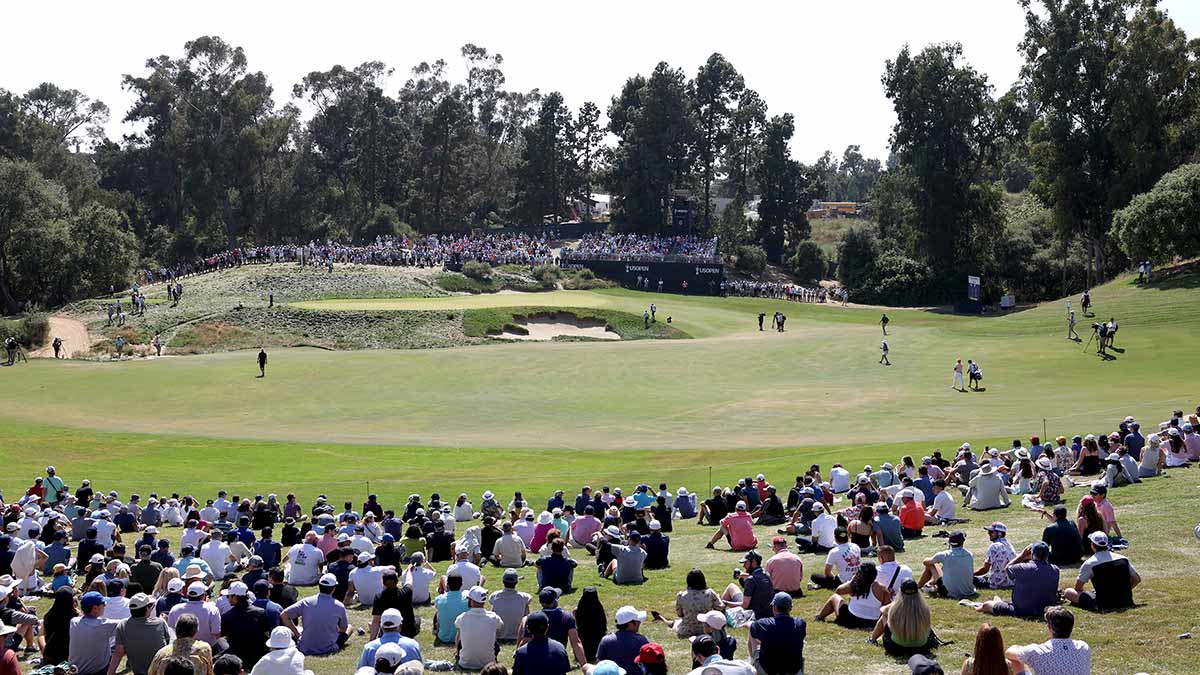Forget the Saudi merger, this U.S. Open was a reminder of golf’s original truth
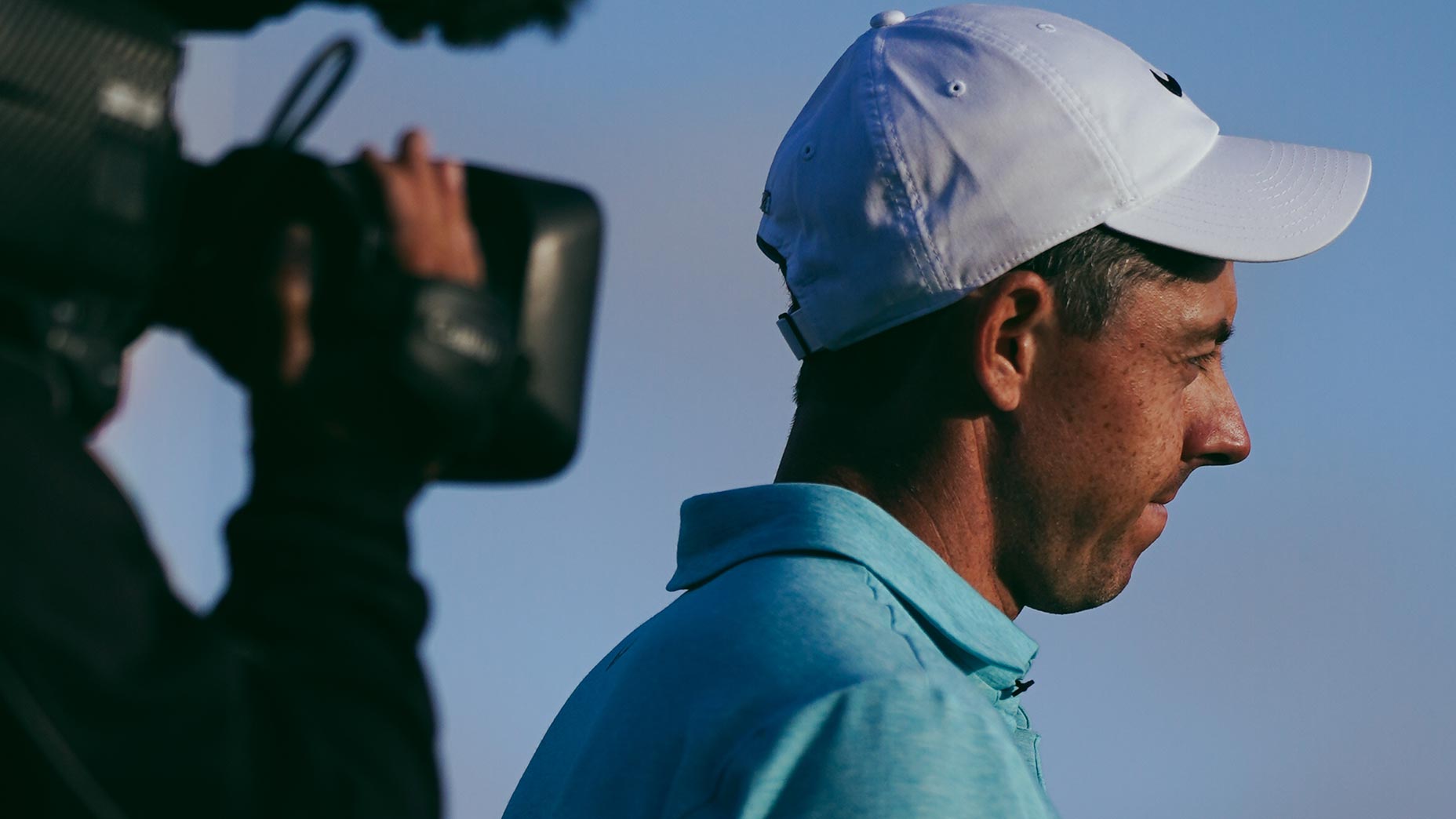
Rory McIlroy stared down golf history on Sunday at the U.S. Open.
Getty Images
LOS ANGELES — As it turns out, golf didn’t need a historic disruption or a few billion dollars of Saudi money to prove itself maddeningly impervious to change.
It needed only Rory McIlroy.
On Sunday at Los Angeles Country Club, McIlroy employed a script old enough to turn away even the most depraved Hollywood executive: a four-hour marathon in which the protagonist battles his inner-demons.
It was, by all means, a hapless endeavor. A decade’s worth of duds told us that. But maybe Sunday at the U.S. Open would be different. Maybe, finally, it’d deliver a blockbuster.
We’d seen this movie before. Most recently at the 2022 Open Championship, when another major-less pro (Cam Smith) made five-straight birdies to leapfrog Rory on the back nine and steal the trophy from his outstretched fingers. The characters were different this time, but the story felt the same.
There was little question from early on that McIlroy was competing mostly against himself. Rickie Fowler, the wire-to-wire 54-hole leader, bowed out early in the afternoon. Scottie Scheffler, persistent lurker, never quite charged. That left only Wyndham Clark, a 29-year-old journeyman pro with a whopping one PGA Tour win, standing in his way.
Clark would turn out to be a fitting adversary for McIlroy, who battled yet another ice-cold putter and yet another case of the good-but-not-greats. All day long, Clark executed the necessary shots to keep McIlroy at bay, while still dangling the possibility that he might hand the tournament to the protagonist. (He’s hardly an A-lister, but, goodness, this Clark kid has some moxie.)
Eventually it seemed Clark had the victory all but guaranteed. He stalked to the 15th tee with a three-shot lead that appeared to doom McIlroy’s chances of flipping the script. But that was when the real fun began.
Golf has not suffered a month like this in quite some time.
Even by the apocalyptic standards of the last year and change, the events of the last 15 days have been in a tier all their own; a breaking point from which the sport might not ever return.
From the moment the news broke, the Saudi Public Investment Fund’s landmark merger with the PGA Tour seemed to have altered golf’s competitive landscape forever. Under the proposed agreement, the Tour would join forces with the enemy, reversing course on a year’s worth of high-grounding in favor of a few billion in cold hard cash.
From now on, touring professional golf would not have a Saudi-free option. The Tour, and those who played for it, were forever entwined with a morally compromised body that sought to utilize the sport for its own gain.
Last week’s news cycle teetered between foreboding and outright fatalistic. The bad guys had won. The good guys were actually bad guys. Whatever version of pro golf existed into the future would be tainted by everything that led to the present. Golf was dying.
But then the calendar flipped to Monday, and the golf world found itself staring down a strange reminder of its own vitality. It was time again for the U.S. Open, and after a week filled with fire-and-brimstone messaging, the USGA entered Los Angeles with a vastly different story to tell.
This year’s national championship had brought in a record-breaking amount of hospitality money thanks to both the tournament’s location (LA) and the sport’s growing intrigue in the post-Covid era. It would be shown for a record-breaking number of national TV hours, with record-breaking audiences expected. Oh, and it would offer a record-breaking purse — $20 million — an effort buffeted by the financial successes of both media rights and hospitality sales.
Sure, there were other things happening in the sport. Quite possibly bad things. But for one week at least, golf was stubborn enough to keep those worries from damaging the championship.
The golfers seemed to agree. As one after another approached the lectern for media availability on Monday and Tuesday, the merger dominated their interview questioning. It was time again to refocus on the real message in golf, to address the change that had so obviously shaken the sport to its core. But then something funny happened: There wasn’t anything interesting to say.
“I’ll be completely honest, I literally know as much as you,” Matt Fitzpatrick said.
“I know as much as everyone else,” Cameron Smith said.
“We’re all in a bit of a state of limbo because we don’t know what’s going on,” Jon Rahm said.
The Saudi situation may have changed golf forever, but if it had, those principally affected by it still didn’t know in what way. And so, as it always does, the attention of the golf world was dragged unwittingly back to the golf.
“I think the USGA has the ability to do that,” said Brad Faxon, an NBC Sports analyst and McIlroy’s putting coach. “To say, hey, let’s make this the U.S. Open, let’s not make this two different tours, let’s not make this about the what-if, because as many questions as we all have, there’s no answers to this yet. The message is going to be hey, let’s play golf, let’s all get along.“
The merger wouldn’t go down without a fight. The Tour nearly pillaged the championship all together, announcing on Tuesday night that commissioner Jay Monahan would be stepping away from his post to deal with an unspecified medical situation. Questions ran rampant in the minutes following the news. What happened to Jay? How long would he be away? How could the Tour negotiate a proper deal with its nefarious partners without the help of its chief architect?
But when the sun rose on Wednesday, mum was the word. Nobody knew anything about the commish’s situation, nor about the circumstances that precipitated it. We learned only that he was in good spirits, and that USGA chief Mike Whan was thinking about him. When the sun set, the focus again was on the golf.
The weekend presented plenty of opportunities for the Saudis to enter the spotlight. Dustin Johnson flirted briefly with the lead, and his fellow LIV teammate Cam Smith mounted a late charge, but neither effort materialized in a way that would shape the narrative. Not even LIV’s biggest (and most vindicated) proponent, Phil Mickelson, addressed the media on the situation.
And so as the focus shifted to the three Tour lifers at the top of the leaderboard on Sunday, the narrative centered on normal Sunday-at-a-major conjecture: legacy and possibility, dreams and heartbreaks, the weight of history.
And at the center of all that conjecture was the person whose story everybody already knew; the person who could transcend the merger noise, and whose victory on Sunday could transcend the sport in its entirety.
Rory McIlroy.

It was not a perfect U.S. Open. Not for Rory, and not for anyone else.
Golf entered the week desperate to beat back the narrative that its biggest stakeholders were under the influence of a small group of elites with questionable motives, but when play began on Thursday, that narrative seemed to be gaining steam.
While no one questioned the quality of the tournament’s host, Los Angeles Country Club, there was more than enough room to quibble with the hosts’ demands. The crowds who wandered the fairways at Los Angeles Country Club were quiet, small in number and overwhelmingly had ties to club membership or corporate sponsors. The hospitality setting lent itself to the sort of half-interested crowd one normally sees at fringe tour events. One coveted grandstand behind the 14th green and 15th tee was restricted to members only. The ropes were set in a way that discouraged walking to some parts of the course.
“We both had shots and it was, like, within five feet of the hole and we got no claps,” Nick Hardy said on Saturday of him and his playing partner, Romaine Langasque. “And then we holed out, both made par and got no claps. It’s just kind of weird. It feels like Covid years, kind of.”
Soon reports leaked that put the number of attendees receiving tickets through traditional means at 4,500 per day, a pittance next to last year’s 40,000 in Boston. The U.S. Open, long golf’s most proudly egalitarian major, felt like it’d cozied up to the same forces it was supposed to fight against.
“Very poor. It’s disappointing on the USGA side,” defending champion Matt Fitzpatrick said. “They want a great tournament — from what I’ve heard a lot of members bought tickets and that’s why there’s so many less people. Hopefully it’s not the same for other U.S. Opens going forward.”
But once the outrage settled and the golf began, a different reality emerged. The USGA hadn’t destroyed American golf — it had showcased it. Concerning as those storylines felt from outside the ropes at LACC, they served as a strange reminder of American golf’s original sin. Of course the U.S. Open found itself in the crosshairs of the exclusivity and affluence that have long determined the sport’s finest venues. The point was to see the sport’s finest venues!
In truth, once the golf began, there wasn’t much reason to complain about what happened inside the ropes. The course was phenomenal, the players were properly challenged, the national championship had lived up to its billing.
That much was blatantly obvious as McIlroy and Clark battled their way down the stretch on Sunday. The knockdown, drag-out fight delivered one of the most utterly heart-thumping final rounds in memory. Not even LACC could distract from the glory of LACC.
There was something worth learning in that last part — something that felt more relevant than ever as Saudi involvement in pro golf grows to be an inevitability on this U.S. Open Sunday. In short, the lesson is this: Golf is not in a battle against the Saudis, influence, affluence, or anything else.
It is, as it has always been, in a battle with itself.
Rory McIlroy did not find Hollywood fame on Sunday afternoon at the U.S. Open. As he has too many times in these last nine years, he found heartbreak.
McIlroy inched as close as one back during the final three holes as Clark floundered his way down the closing stretch, but that was as close as he would ever get. Clark closed out McIlroy on the 72nd green, his two-putt par securing an astonishing and impressive ascent to golfing fame.
Somehow, he’d done it again. All the right moves. All the right shots. All the right words. And he’d still fallen painstakingly short of the one thing he wanted most.
There was a sense of exhaustion from McIlroy as he stepped in front of the cameras for the first time. He understood the gravity of the moment. He knew the questions he would have to answer.
McIlroy’s major struggles have dominated the better part of the last nine years of professional golf. He has tried every approach to success, made every imaginable tweak and still fallen short. The failure is all-encompassing on days like Sunday, when it feels like it’s all he’ll ever experience.
McIlroy’s most impressive attribute is his stubbornness. To quit would be to change, and to change would be to surrender.
He won’t stop trying because he can’t stop trying. There’s always another tomorrow. For McIlroy, but for golf, too.
“When I do finally win this next major, it’s going to be really, really sweet,” he said Sunday evening. “I would go through 100 Sundays like this just to get my hands on another major.”
The struggle is part of the story, but thankfully, it’s not the story.
The story is what comes after.

